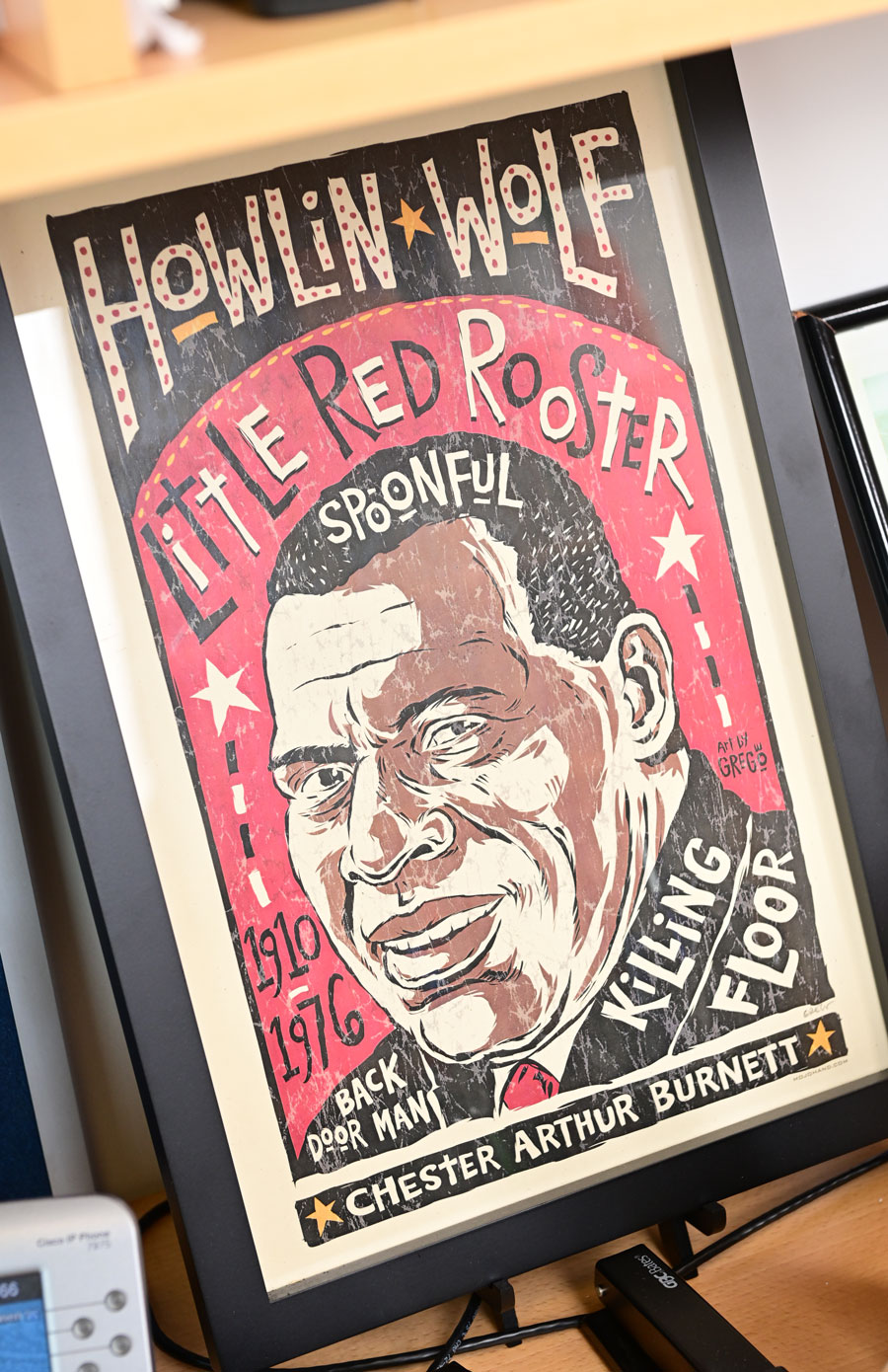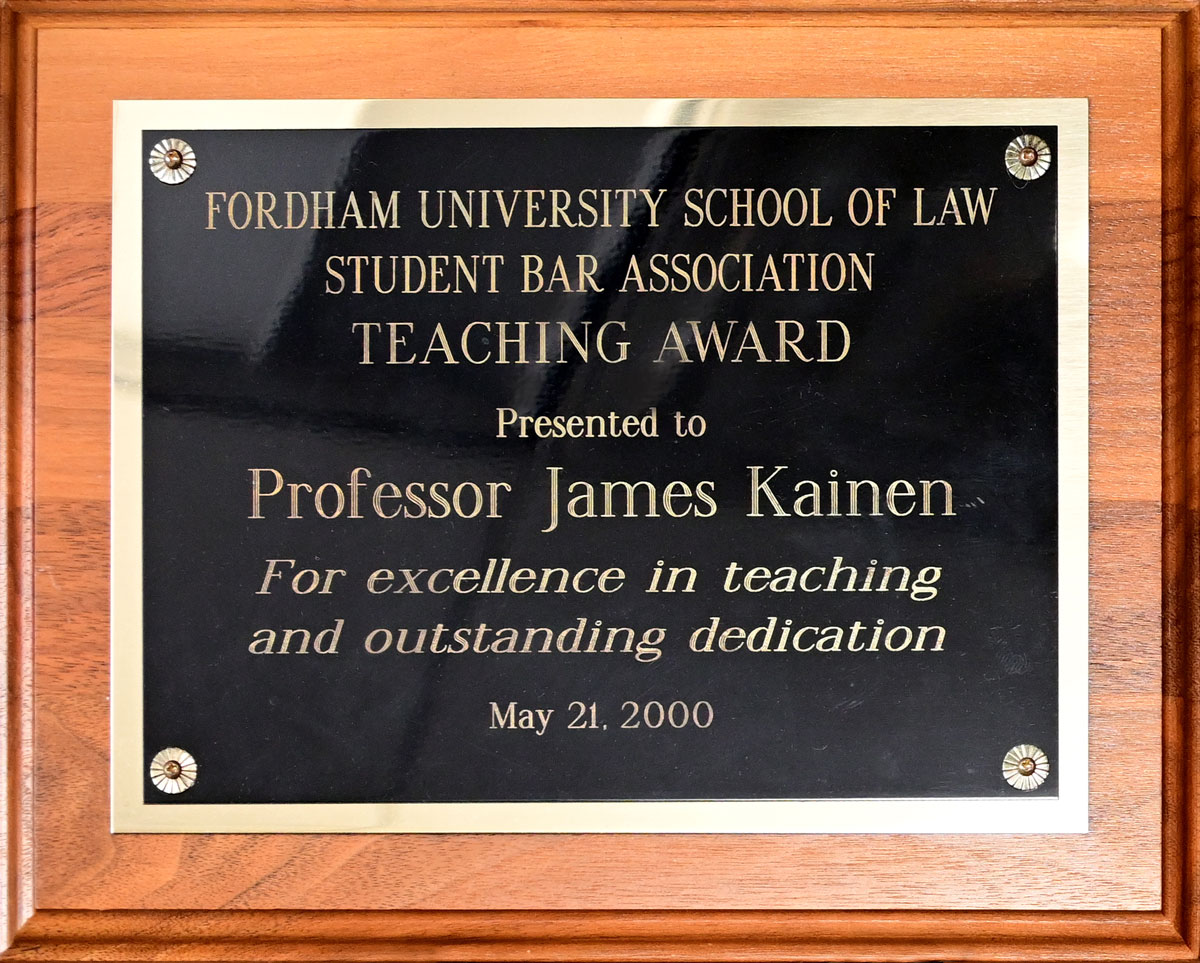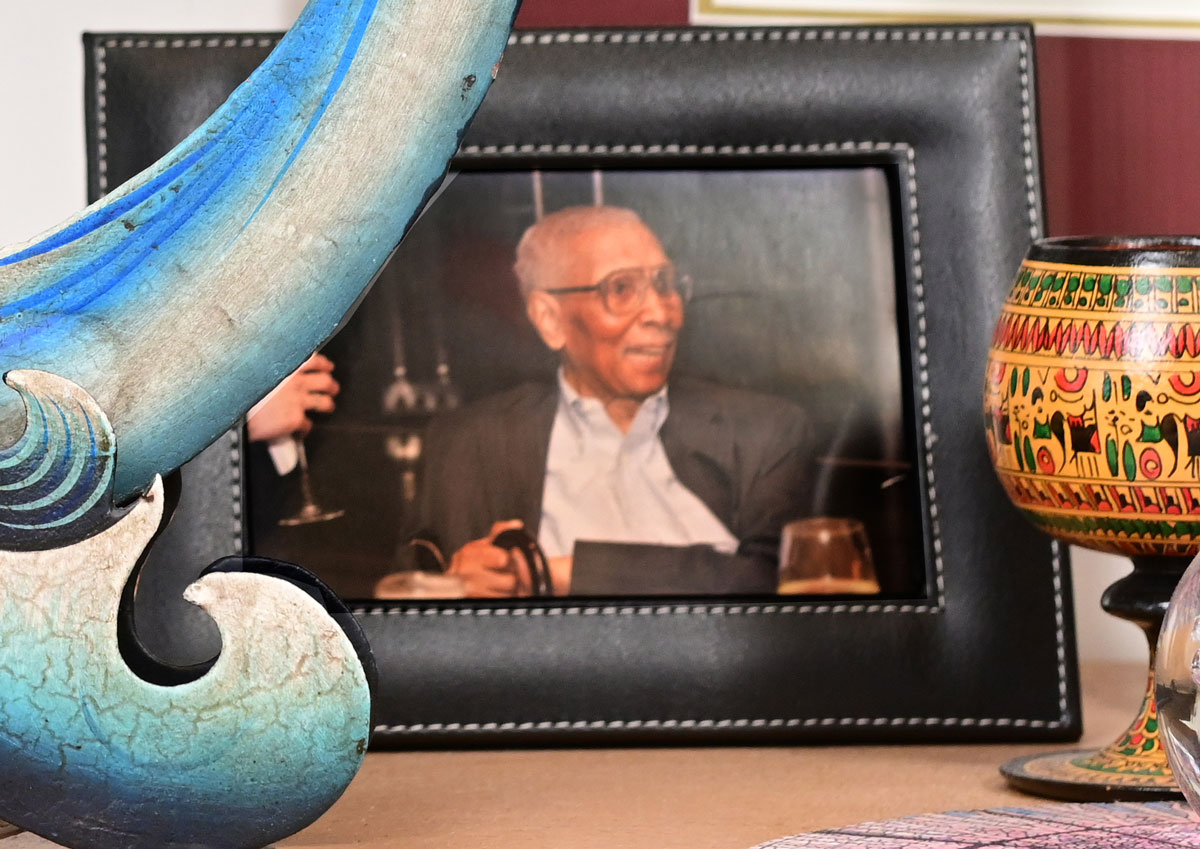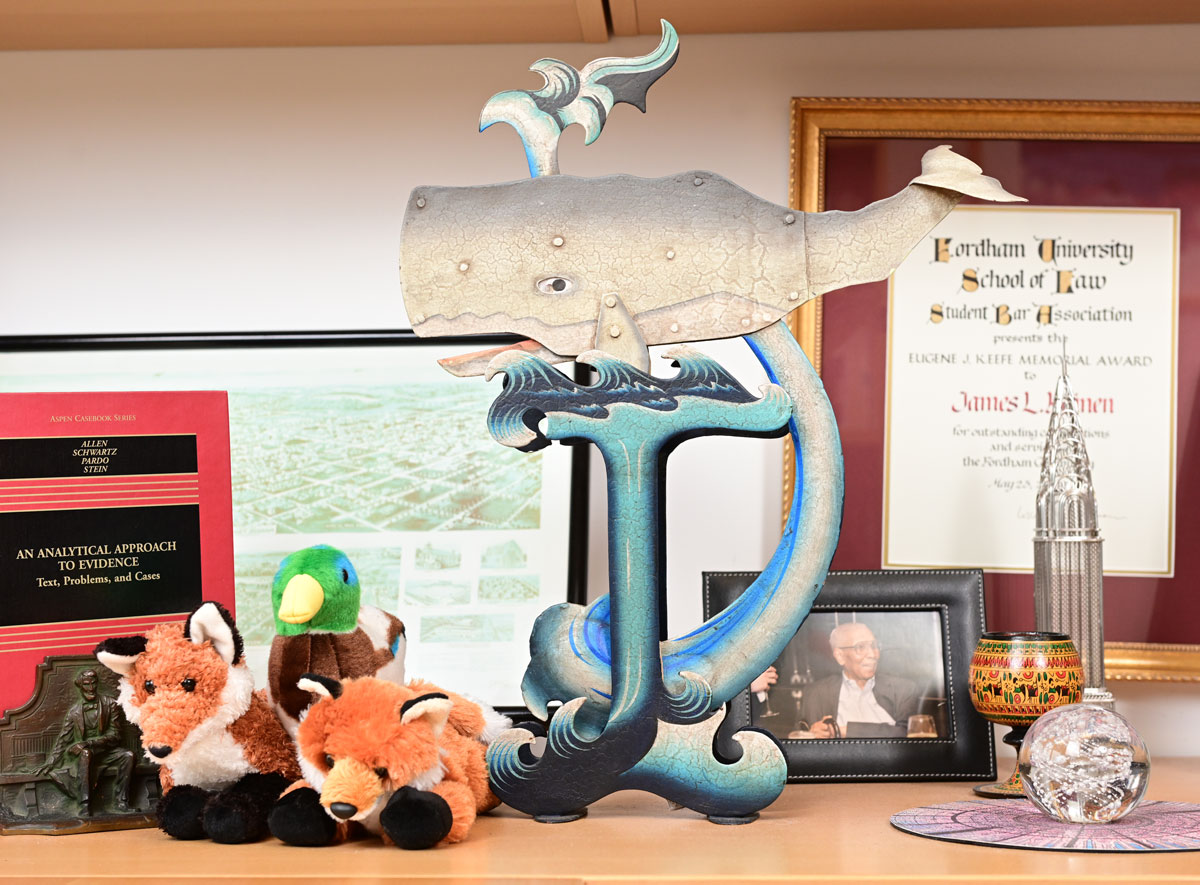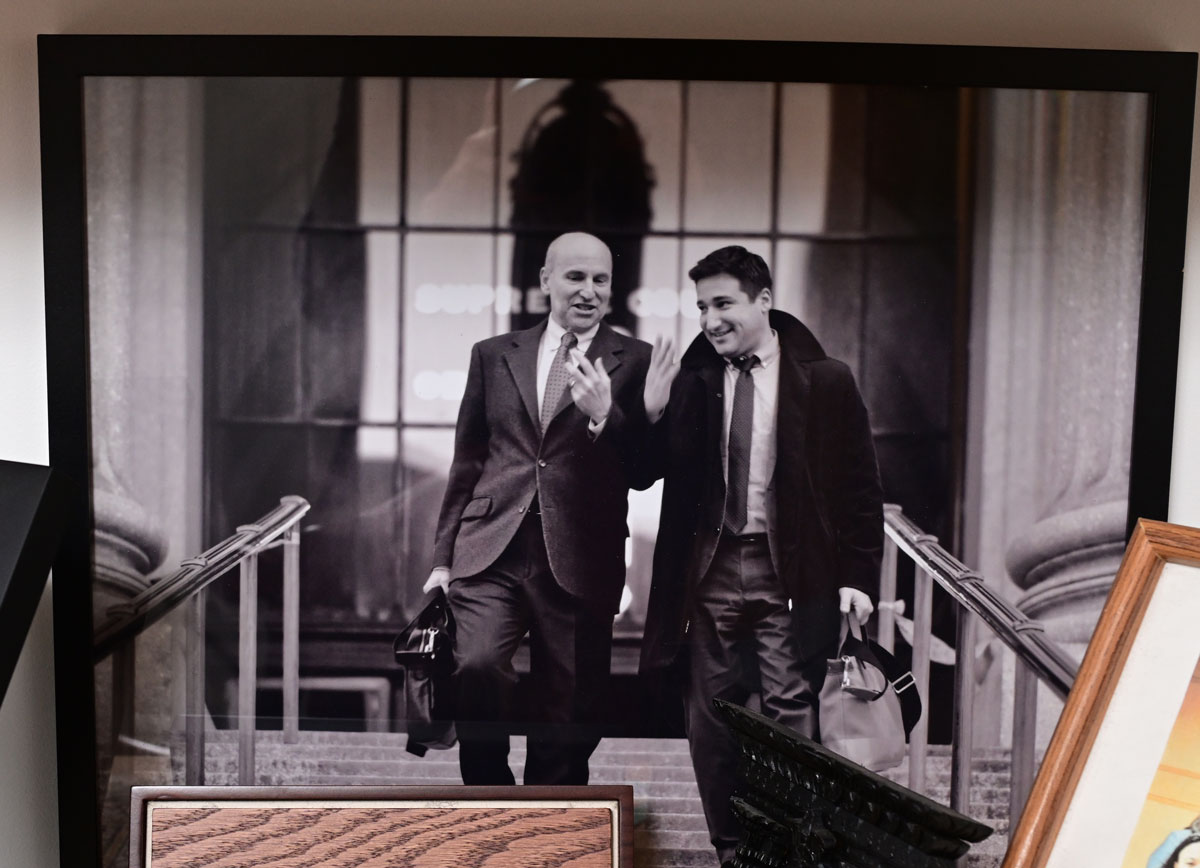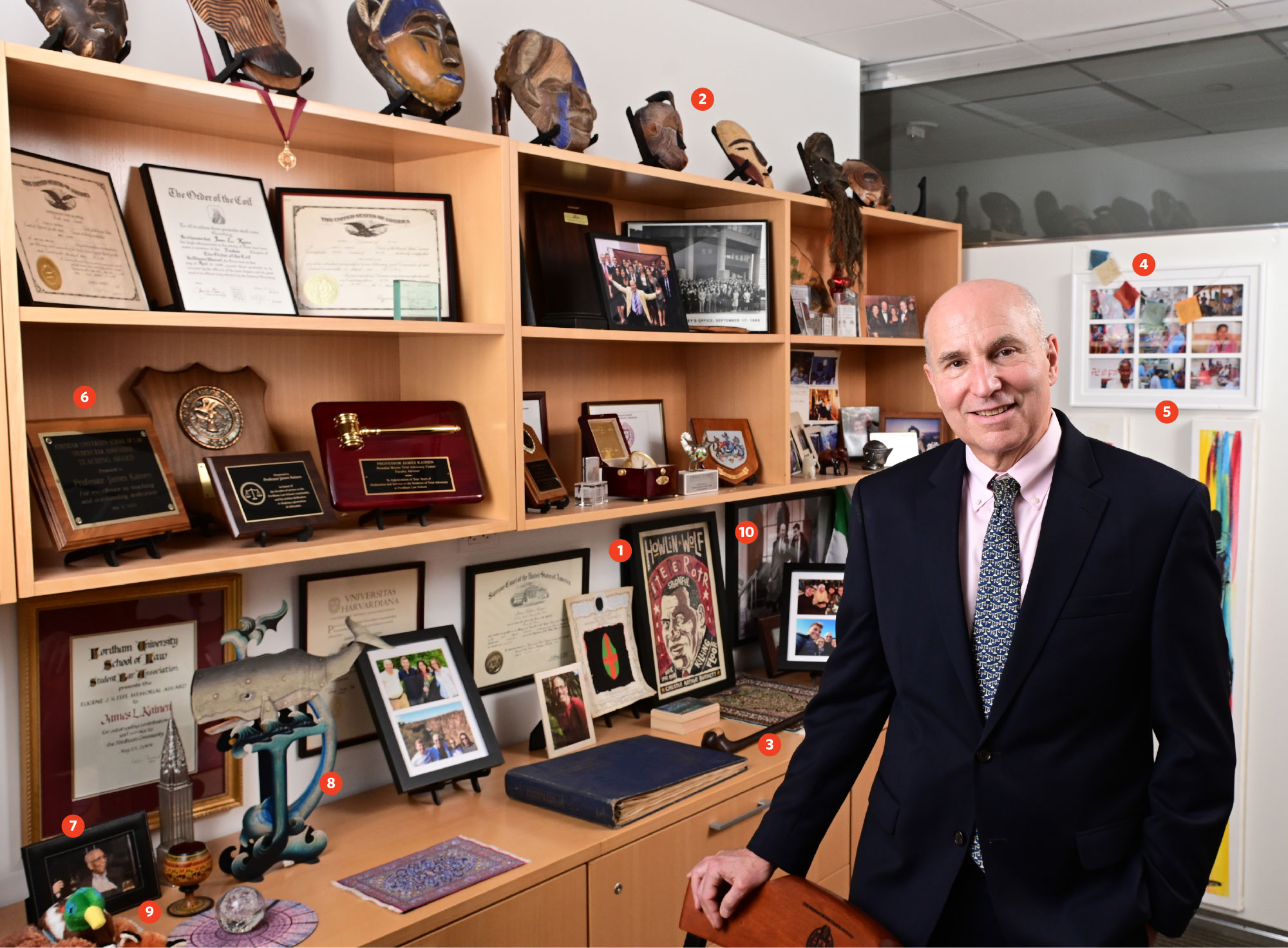

Professor James Kainen
Though James Kainen has been teaching property and evidence at Fordham Law since 1989, his main contribution to the school, as he sees it, has been coaching hundreds of students to success in rigorous trial competitions around the country.
Not that he planned it that way.
“When I got here,” says Professor Kainen, who is the founder and chair of the Brendan Moore Trial Advocacy Center, “we didn’t have a trial advocacy competition program. The students were interested in competing and they kind of found me.” Kainen started out coaching one team; now, the school sends as many as 18 teams a year to competitions, including virtually during the pandemic. No wonder his office is filled with gifts, like a lighter inscribed with “Yoda” (left), one of the affectionate nicknames given to him by grateful students. “I guess that name’s because I’m the source of all wisdom?” he says, laughing. Here, Kainen tells the stories behind the photographs, art, and other objects, whether eclectic or kitschy, that populate his seventh-floor office.
—Paula Derrow
